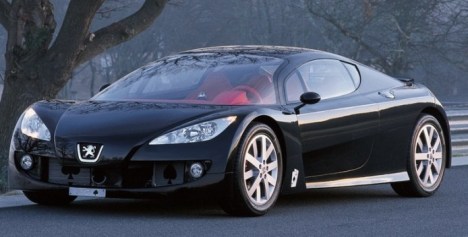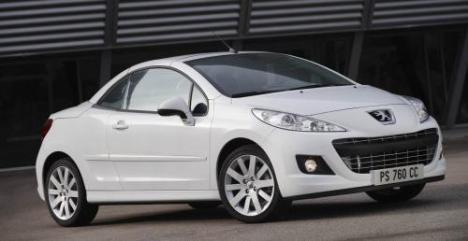 With its three body shapes, each bursting with appeal, the Peugeot 207 moved into the pole position in the European small car market in 2007 and then remained there in 2008 with sales of 423,700 units.
With its three body shapes, each bursting with appeal, the Peugeot 207 moved into the pole position in the European small car market in 2007 and then remained there in 2008 with sales of 423,700 units.
However, in the summer of 2009, the Peugeot 207 will become even more visually appealing due to the introduction of a number of new features, allowing it to:
* win new admirers with a more distinctive elegance but still maintaining a personality full of dynamism.
* attract previous and existing owners (1,460,000 207s were produced to the end of April 2009) who, once or even twice before, will have approved of its innovative profile and original styling which are well above average for the segment in day-to-day use to continue to win the hearts of its customers through its charm, its blend of comfort and driveability, its low running costs and high levels of standard equipment.
With the new 207, Peugeot, the European leader in the B2 segment in 2008, once again demonstrates its small car expertise. By the end of the first half of 2009 Peugeot will have completely modernised all its vehicles in this segment.
The Peugeot 107, the ideal urban car in the B1 segment, compact and easy to drive, was given a new design at the front in January 2009 that added a touch of class to its young and trendy image.
In March 2009, the Peugeot 206+ was introduced to continue the Peugeot 206 legend with a new goal: that of a versatile entry level vehicle in the B2 segment with proven qualities and a refreshingly modern design featuring all the current Peugeot styling cues.
Finally in July 2009, the Peugeot 207, the “star of the small car market” will finally see its appeal enhanced in three key ways:
Exterior Styling Changes
* a redesigned front combining natural dynamism with a softer visual look
* more body coloured surfaces and chrome detailing
* spectacular new rear lights using panels of luminescent diodes (hatchback and CC)
A more luxurious passenger compartment
* new trims and detailing placing emphasis on perceived quality, comfort and dynamism
* new instrument panel designs with a more modern look and visual appeal
An even greater commitment to reducing fuel consumption and protecting the environment
* thanks to particularly fuel efficient engines with reduced greenhouse gas emissions
* through the optimisation of the rolling resistance of the tyres to reduce fuel consumption
* through “very low fuel consumption” optimised not only aerodynamically (exceptional Cx of only 0.274), but also by operation of the engine itself and rolling resistance, allowing CO2 emissions to be reduced to 99 g/km
* through the gradual deployment of engines meeting the Euro5 emission standard
* through the introduction of a gear change indicator on manual gearbox engines encouraging the driver to drive in a more environmentally efficient way.
Introduction of new equipment enhancing both comfort and driving safety
* WIP Bluetooth system
* impulse direction indicators
* remote controlled window closure (hatchback and SW)
* one-touch operation of the driver’s electric window on the Peugeot 207 CC
The Peugeot 207 family, therefore, builds on its basic strengths: excellent primary, secondary and tertiary safety and innovative hi-tech equipment.
It also reaffirms its distinctive appeal in each of its different body shapes:
* The Peugeot 207 hatchback, three or five doors: Elegant and user-friendly, dynamic and sporty, it offers a unique blend of comfort and driveability as well as remarkable versatility.
* The Peugeot 207 SW and SW Outdoor: An attractive aesthetic balance, a bright interior and remarkable practicality: all major benefits with, for the Outdoor version, an added taste of adventure.
* The Peugeot 207 CC: Europe’s leading cabriolet, all categories combined, offers an attractive style coupled with the dynamism and safety that are the foundation of its appeal
Filed under: Peugeot | Tagged: Peugeot 207 RC | Leave a comment »


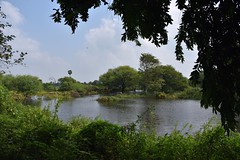









 Here we go again; Peugeot is said to be readying a new flagship sedan dubbed 608 that aims to establish the French carmaker as a major player in the premium mid-size segment that’s besieged by models like the Audi A6, Mercedes-Benz E-Class, and the BMW 5-Series.
Here we go again; Peugeot is said to be readying a new flagship sedan dubbed 608 that aims to establish the French carmaker as a major player in the premium mid-size segment that’s besieged by models like the Audi A6, Mercedes-Benz E-Class, and the BMW 5-Series.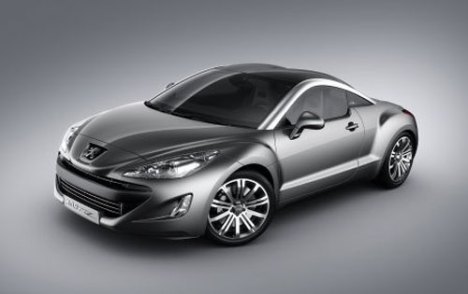 The Peugeot RCZ first appeared at the 2007 Frankfurt motor show as the 308 RCZ concept – and it stole the show.
The Peugeot RCZ first appeared at the 2007 Frankfurt motor show as the 308 RCZ concept – and it stole the show. Peugeot’s Audi TT will be unveiled at Frankfurt motorshow in September. The car will be fitted with a mini cooper JCW 1.6 turbo,possibly tuned to 218 Bhp the Zagota style roof bulges stay, as does the kink alomg the side window line. Peugeot insider said the car has an almopst identical footprint to tt and price will be below 20000 euro. The new generation 2 liter HDI in either 150 or 163 bhp will also be available mated to automatic or manual transmission.
Peugeot’s Audi TT will be unveiled at Frankfurt motorshow in September. The car will be fitted with a mini cooper JCW 1.6 turbo,possibly tuned to 218 Bhp the Zagota style roof bulges stay, as does the kink alomg the side window line. Peugeot insider said the car has an almopst identical footprint to tt and price will be below 20000 euro. The new generation 2 liter HDI in either 150 or 163 bhp will also be available mated to automatic or manual transmission.
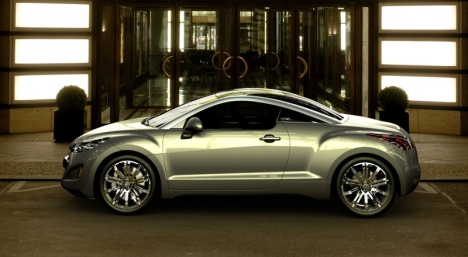 The magnificent Peugeot RCZ which was unveiled as a concept two years ago at the Frankfurt Motor Show has done transformation into a production car and will make its world debut this September, again in the Frankfurt! The RCZ Coupe is actually a new niche in car design, and is 110 percent different than any other Peugeot you have ever seen! It’s not even named like a normal Peugeot, they always use boring numbers but this one has a cool name, RCZ, sounds like a superbike!
The magnificent Peugeot RCZ which was unveiled as a concept two years ago at the Frankfurt Motor Show has done transformation into a production car and will make its world debut this September, again in the Frankfurt! The RCZ Coupe is actually a new niche in car design, and is 110 percent different than any other Peugeot you have ever seen! It’s not even named like a normal Peugeot, they always use boring numbers but this one has a cool name, RCZ, sounds like a superbike! Some clarification is required here. The headline says that this car is a 308 CC SE, and so it is, but at the same time it isn’t. Peugeot loaded it with optional extras in the form of red leather trim, a windstop, an airwave scarf (to warm your neck when the roof is down), metallic paint, satellite navigation, Bluetooth connectivity, an electric seat pack and 18″ alloy wheels.
Some clarification is required here. The headline says that this car is a 308 CC SE, and so it is, but at the same time it isn’t. Peugeot loaded it with optional extras in the form of red leather trim, a windstop, an airwave scarf (to warm your neck when the roof is down), metallic paint, satellite navigation, Bluetooth connectivity, an electric seat pack and 18″ alloy wheels.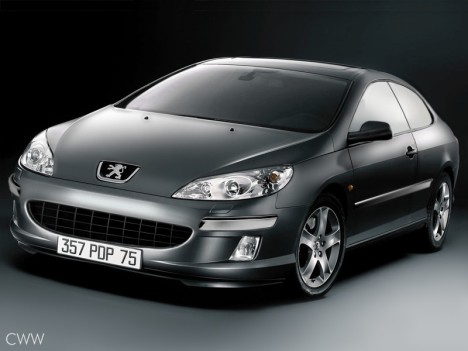

 Us young’uns in the States probably don’t think, see, or hear much about the Peugeot. What is a Peugeot? Exactly.
Us young’uns in the States probably don’t think, see, or hear much about the Peugeot. What is a Peugeot? Exactly.